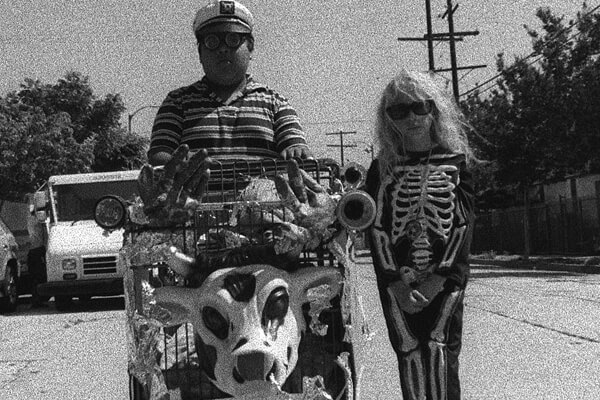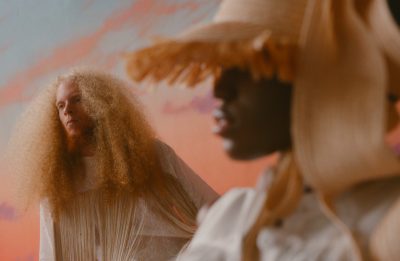“As if John Cassavetes and Jean Vigo collaborated on a Little Rascals episode”: Talking to Little Feet Director Alexandre Rockwell


Rockwell, who now lives in Greenpoint, answered a few of my questions over email.
I guess the obvious first question is how you came to make a feature film with your children—was it your idea, or theirs?
I was down to my last few dollars and packing it up to leave LA and there was this stubborn bug in my ear. I was listening to my children whisper in bed before rolling off to sleep and the idea hit me to make a film with what I had in hand. A few dollars and my children’s dreams. Lana helped me track a simple story and I drew from my own memories of living in the shadows of the adult world.
I’m also going to ask “the influence question,” because it seems more complicated than usual on this film. Because on the one hand I can guess, like, you’ve seen The Little Fugitive and your kids have seen Finding Nemo… But on the other hand I’m also curious how you negotiated between the different, I guess, sensibilities at work on the film? How much did you want to let your children dictate not just the story but things like tone of individual scenes, songs on the soundtrack—did you use a fishbowl as a filter to shoot through because your kids thought it looked cool, or because someday you want them to watch the film and go, “Oh, that looks like Guy Maddin”?
I followed the things that taught me how to want to make films in the first place. Like, the original Little Rascals, Italian Neorealism, Charles Burnett, John Cassavetes and the like. My kids have a kind of direct, no-bullshit way of making things and that helped me create an aesthetic for the film. I wanted it to be raw and invited flash frames and soft-focus shots. I love film grain and frankly had little choice because the odd bits of film stock I got was long-ago expired and each day we took a chance it would not be exposed. Someone said to me, “This looks like as if John Cassavetes and Jean Vigo collaborated on a Little Rascals episode.” High compliments in my world.
When you were directing your son and daughter, playing a brother and sister with their own names, was their anything about their dynamic that surprised you?
My daughter rose to the occasion and became the little mother of the set. My son really surprised me and acted like Marlon Brando with total self-possession and lack of self-awareness. He was fascinating to watch and never did the same thing twice. I was able to talk to them while the camera rolled and that was very helpful. Lana was really surprising in that she took it very seriously and was a consummate professional.
Is directing your own children different from directing other people’s? There’s a considerable juvenile cast in the film…
Yes, I could be tough on my kids and push them a bit more. The other kids were doing it for free and their parents were around so I had to always keep one eye on the kid and one eye on a mother with an ice pick.
How planned was the shoot? Were you able to storyboard, plan out sequences, and stick to a schedule, or… not?
I drew on a plan but no storyboard. I have been doing this for a while and teaching students at NYU as well so I am very aware of how I want a scene to “feel.” I was able to move quickly and get the camera to where I wanted it because I was so close to the children. My goal was to be intimate like that night I heard them whisper beyond the ears of most adults. I wanted to capture that poetry and stay true the their voices without imposing a strict shot list. I like the way this film looks for many reasons, the rawness of the B&W film grain and contrast. It takes me to a place I would want to live…
You might also like 




















